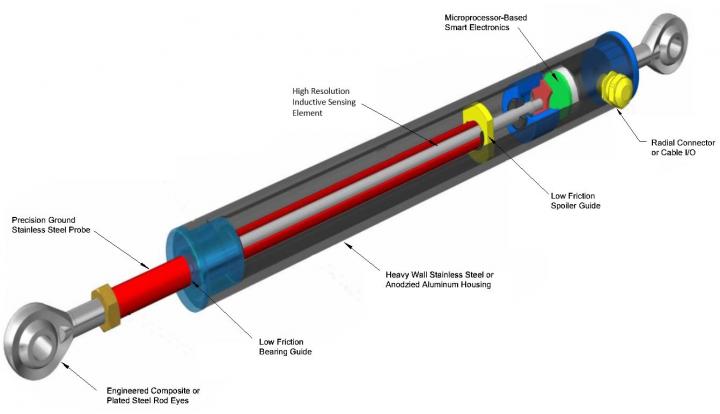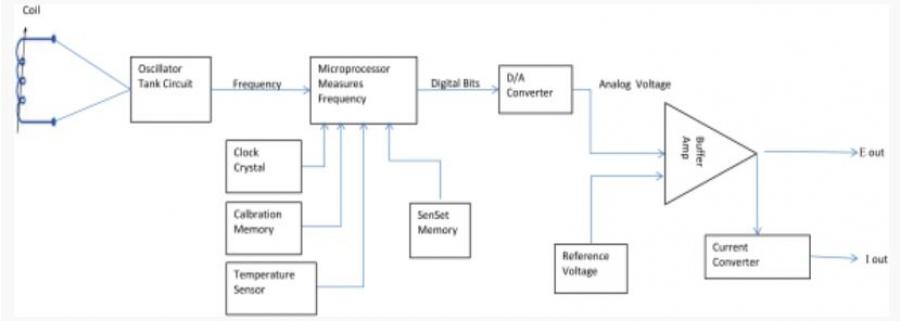Linear Variable Inductance Transducers (LVITs) offer an excellent price-to-performance ratio compared to other linear position sensing technologies such as LVDTs, linear potentiometers, and magnetostrictive devices. The sensor's overall length only increases by a relatively small percentage beyond their stroke. As a result, LVITs may offer better stroke-to-length ratio than many other linear position sensor technologies.
Click to View Most Popular LVIT Position Sensors

LVIT Linear Position Sensor Cutaway View
Because LVITs are inductive, the sensing element is contactless with no friction issues or moving parts that can wear out. As is common for inductive sensors, they exhibit outstanding repeatability, with resolution limited only by the electronics used with them. LVITs offer the performance of contactless sensors like LVDTs or magnetostrictive sensors, but at lower price; comparable to industrial grade linear potentiometers.

LVIT Circuit Block Diagram
An LVIT sensor uses a long, small-diameter probe coil that is connected to the resonant tank circuit of an oscillator found in the built-in electronics. A conductive tube moved over the coil changes its inductance and the resonant frequency of the tank circuit. Oscillator output is coupled to an integrated 12-bit microprocessor to measure its frequency. The digital output of the microprocessor then goes to a d/a converter that develops a voltage proportional to frequency. This voltage is conditioned to produce a high level analog dc output from the sensor. The 12-bit microprocessor also determines the resolution of an LVIT position sensor, which is 0.025% of FSO.
One reason for the robustness of LVITs is that the probe coil is wound on a glass-filled thermosetting plastic rod which can survive large deflections without fracturing. Its single coil winding makes only two connections with the electronics, which substantially reduces the likelihood of a failure and enhances reliability.
The built-in electronics are completely potted within its housing, so these sensors can sustain high shock and vibration levels. This robustness, coupled with a normal operating temperature range of -20ºC to 85ºC, and an extended operating temperature range of -40ºC to +105ºC, permits an LVIT to function very well in practically any industrial or commercial environment. In special cases where an LVIT might be required to operate in a higher temperature environment, the sensor's electronics may be located in a more benign environment a short distance away from the sensor's probe assembly. Another reason for an LVITs' robustness is that the sensors' housings are made of heavy wall anodized aluminum or stainless steel and are environmentally sealed to IEC IP-67 or IP-68. The LVITs' operating rods, also called spoilers, are also stainless steel and do not easily bend.
